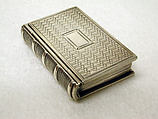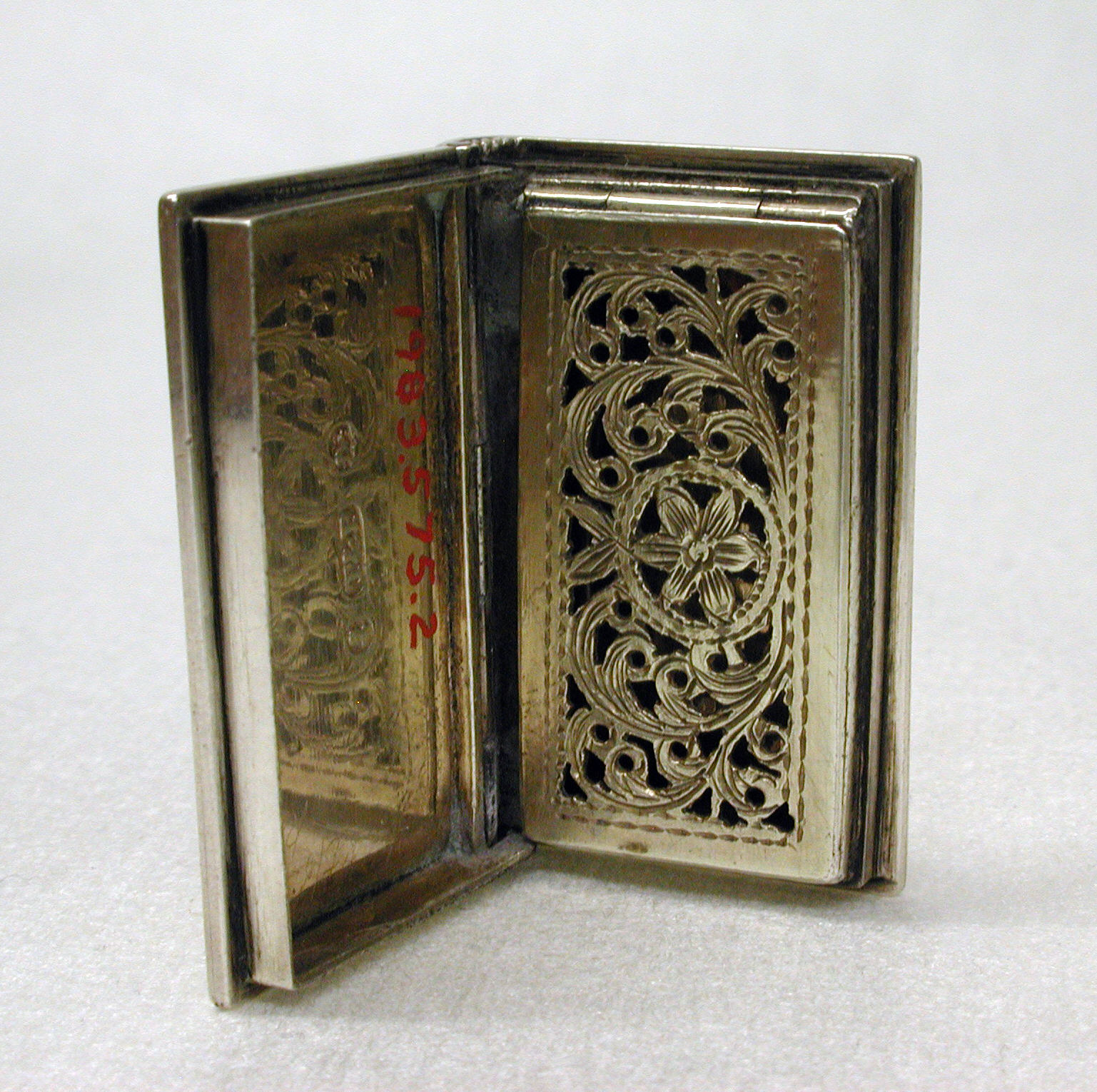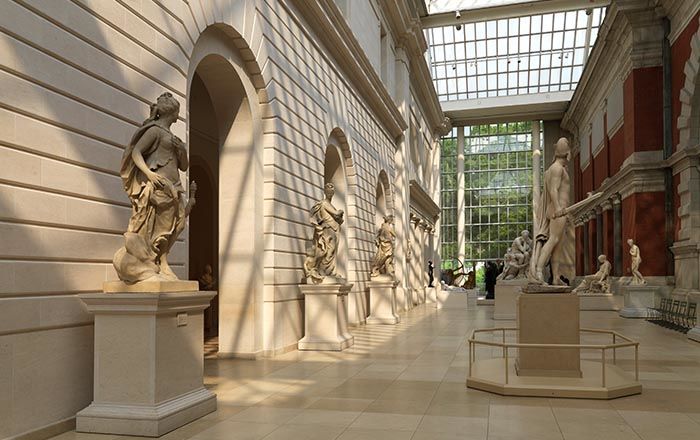Vinaigrette
Not on view
Joseph Taylor had premises in Birmingham and a show room in London. His trade card described him as a “Working Gold & Silversmith, Jeweller, Tortoiseshell & Ivory Box, Gilt and General Toy Manufacturer.”
Besides the satchel-shaped vinaigrette (1983.575.45) and snuffbox (1983.575.3) made by Taylor, The Met also has this unusual vinaigrette in the form of a book made by his brother John and brother-in-law John Perry who took over the business upon Joseph Taylor’s death in 1827.
Engine-turned engraving decorates the front and back while the spine is ribbed. The blank reserve would have allowed for the engraving of a name or initials. The hinged gilded grille has pierced and engraved floral scrolls and a flowerhead. The grille is very similar to that on 1983.575.40 made by a different silversmith. This might suggest some type of factory or mass production of elements or the use of a pattern book.
A vinaigrette was intended to hold a tiny sponge dipped in aromatic vinegar. Its interior Is gilded to protect the silver from oxidation caused by the acidity of the vinegar. A hinged and decoratively pierced inner lid or grille kept the sponge in place while its perforations allowed the odor to waft through. A whiff of the vinegar might revive someone from a fainting spell. Such vinaigrettes were worn around the neck, on a chatelaine suspended from the waist, or carried in a pocket.
This image cannot be enlarged, viewed at full screen, or downloaded.
This artwork is meant to be viewed from right to left. Scroll left to view more.




